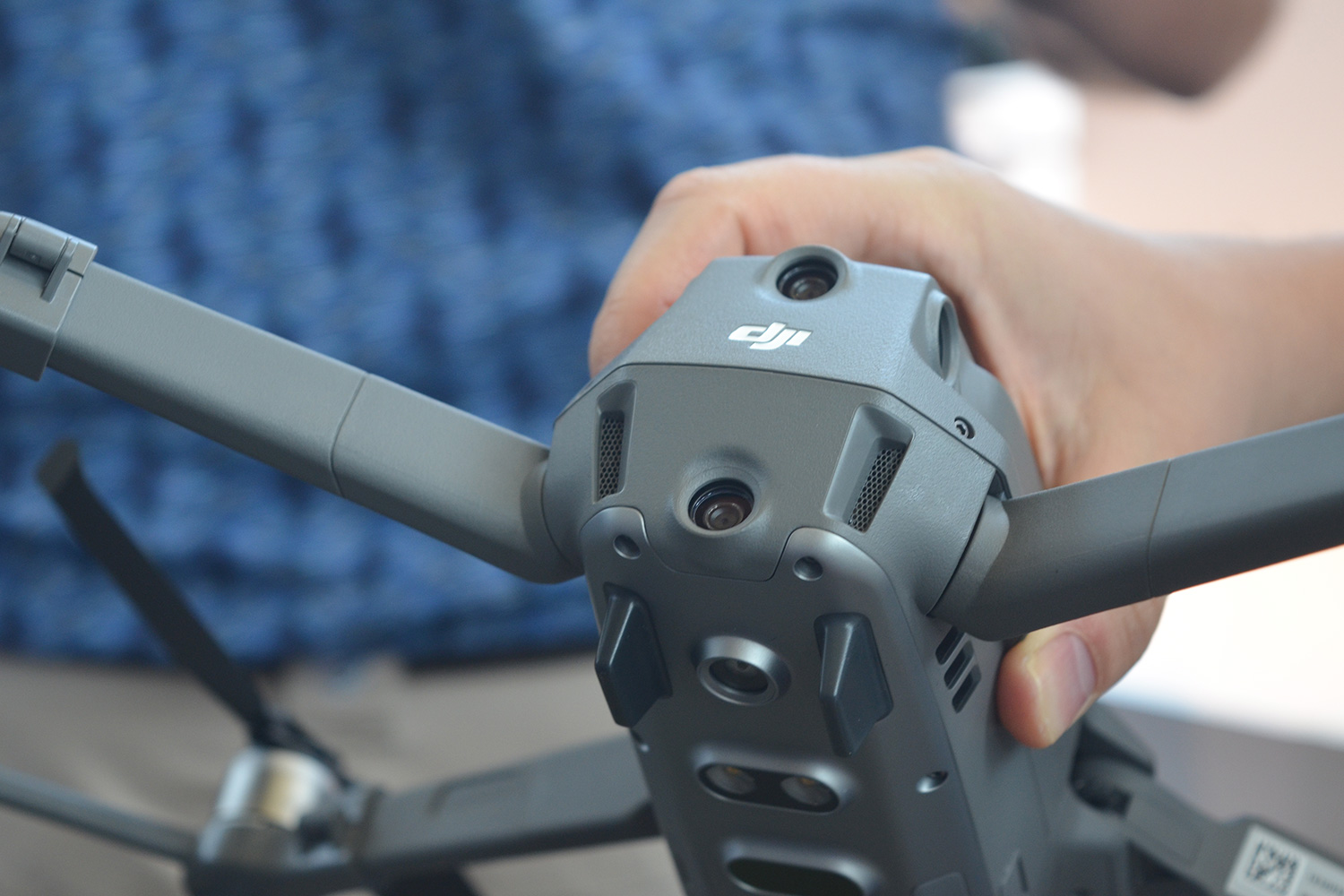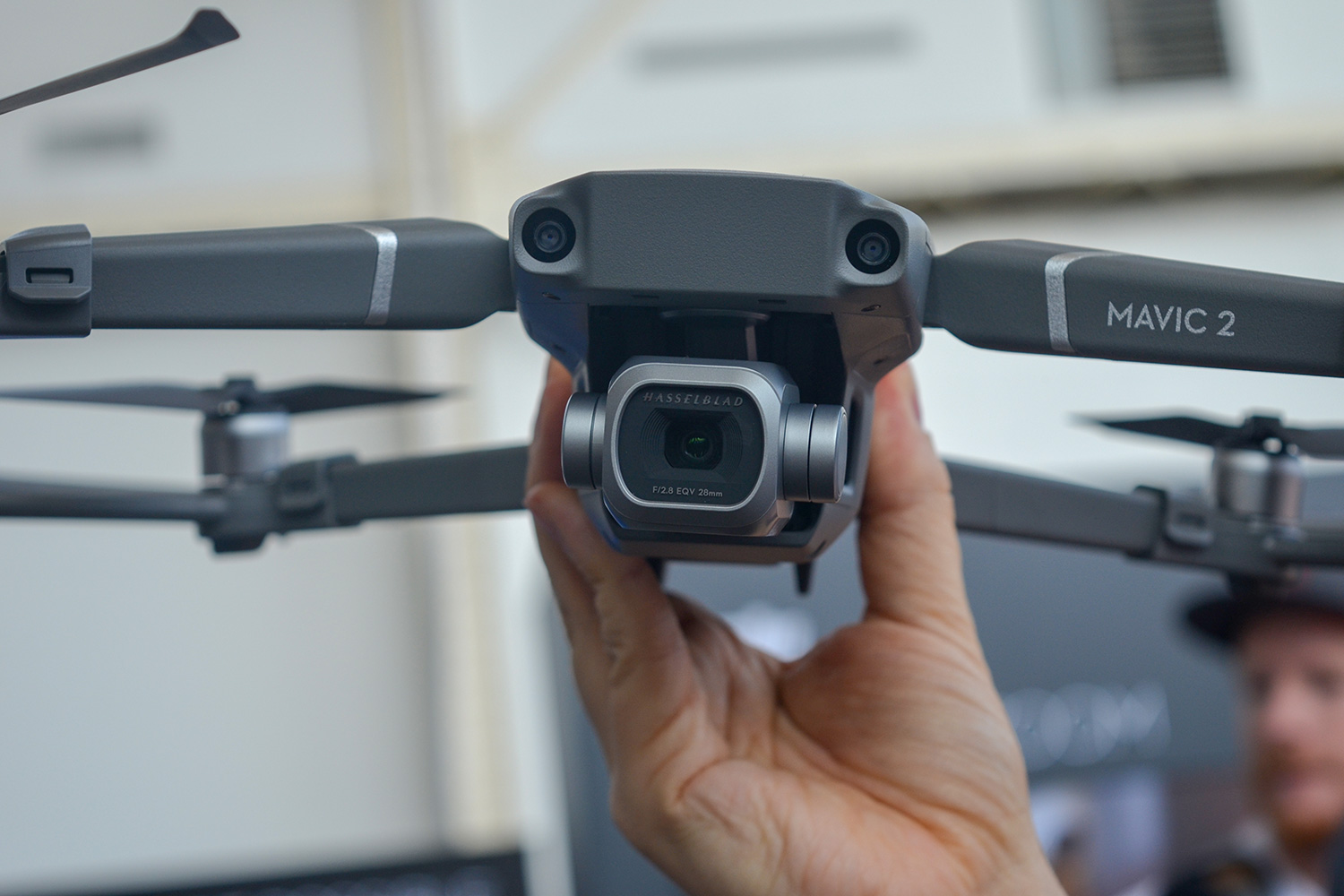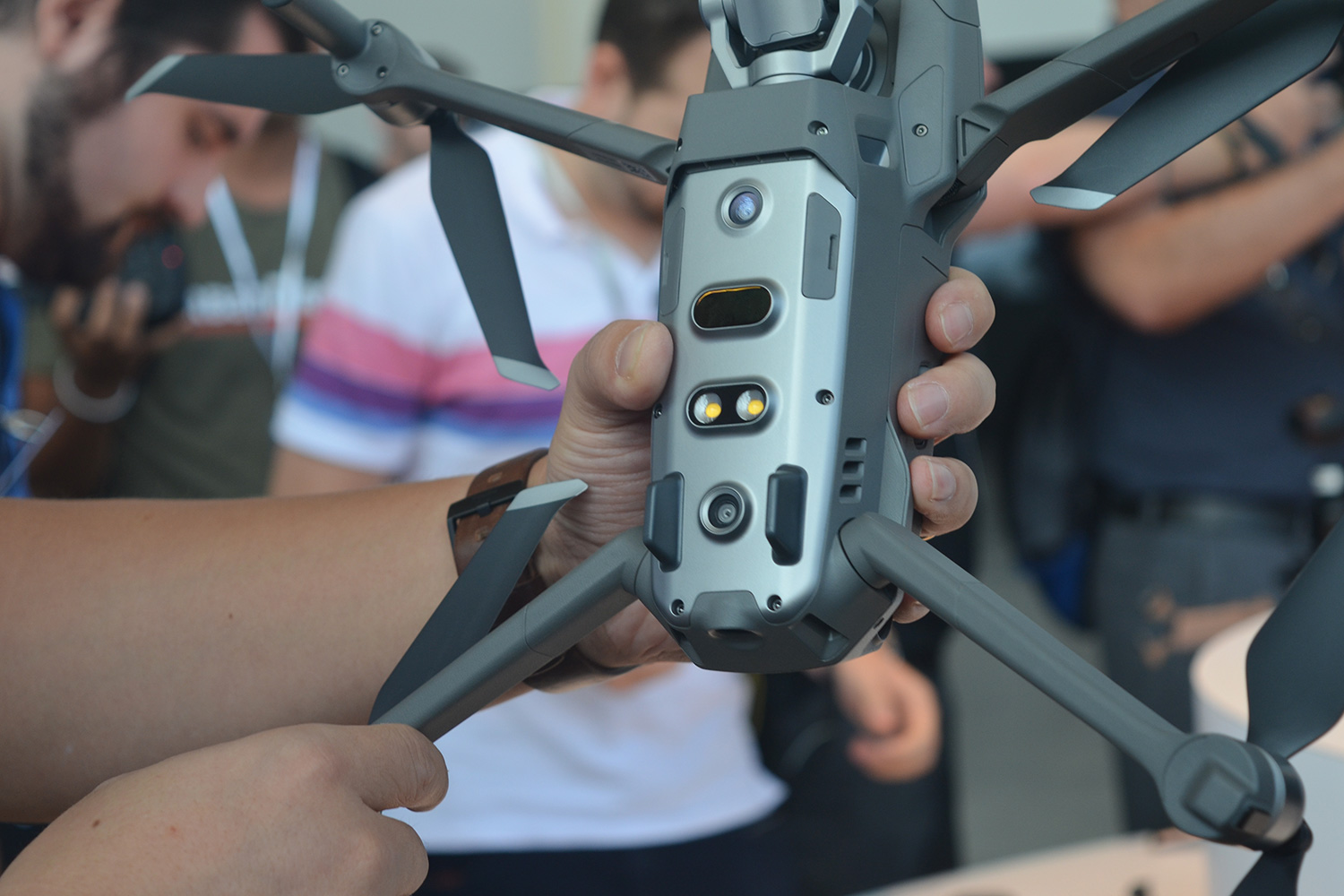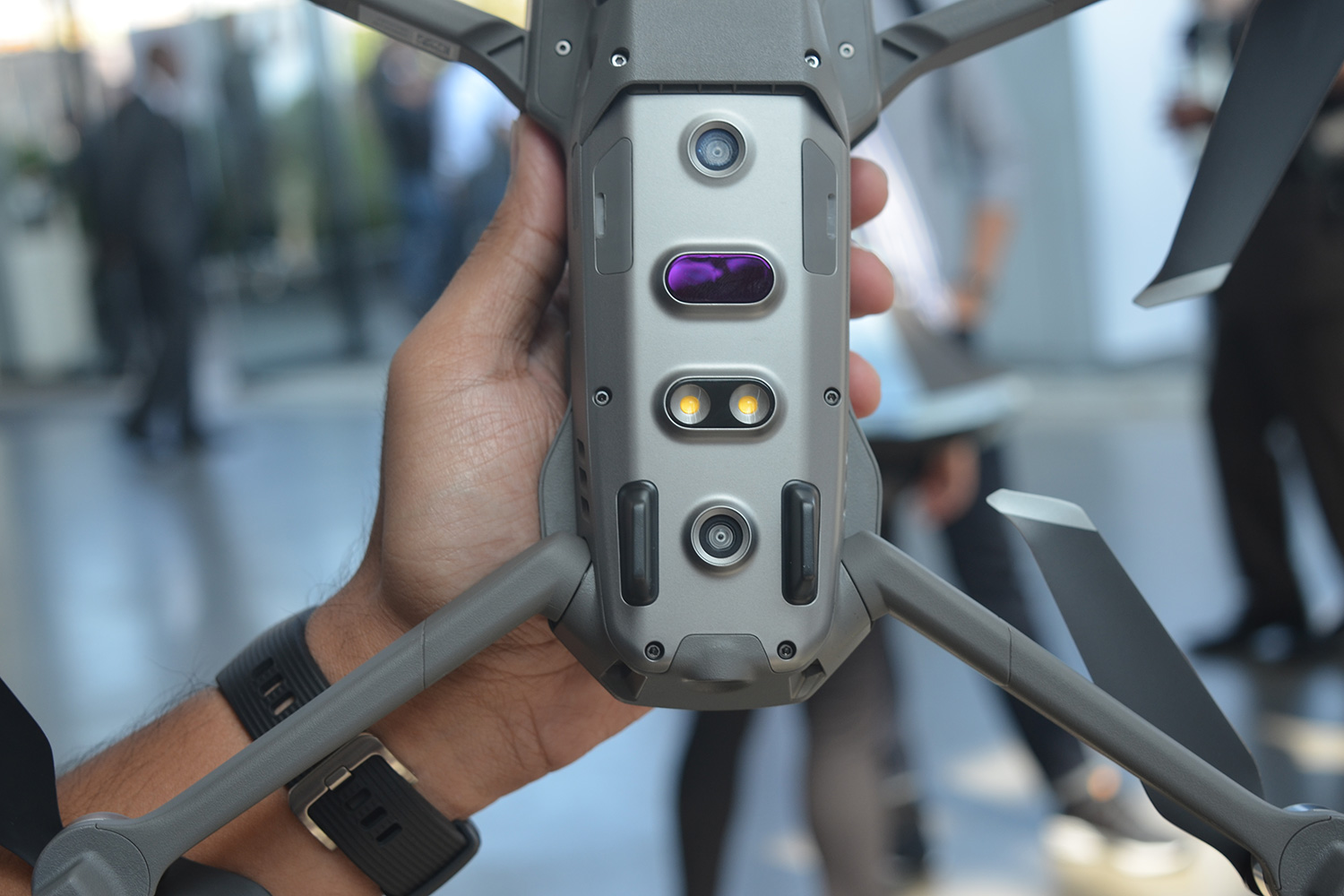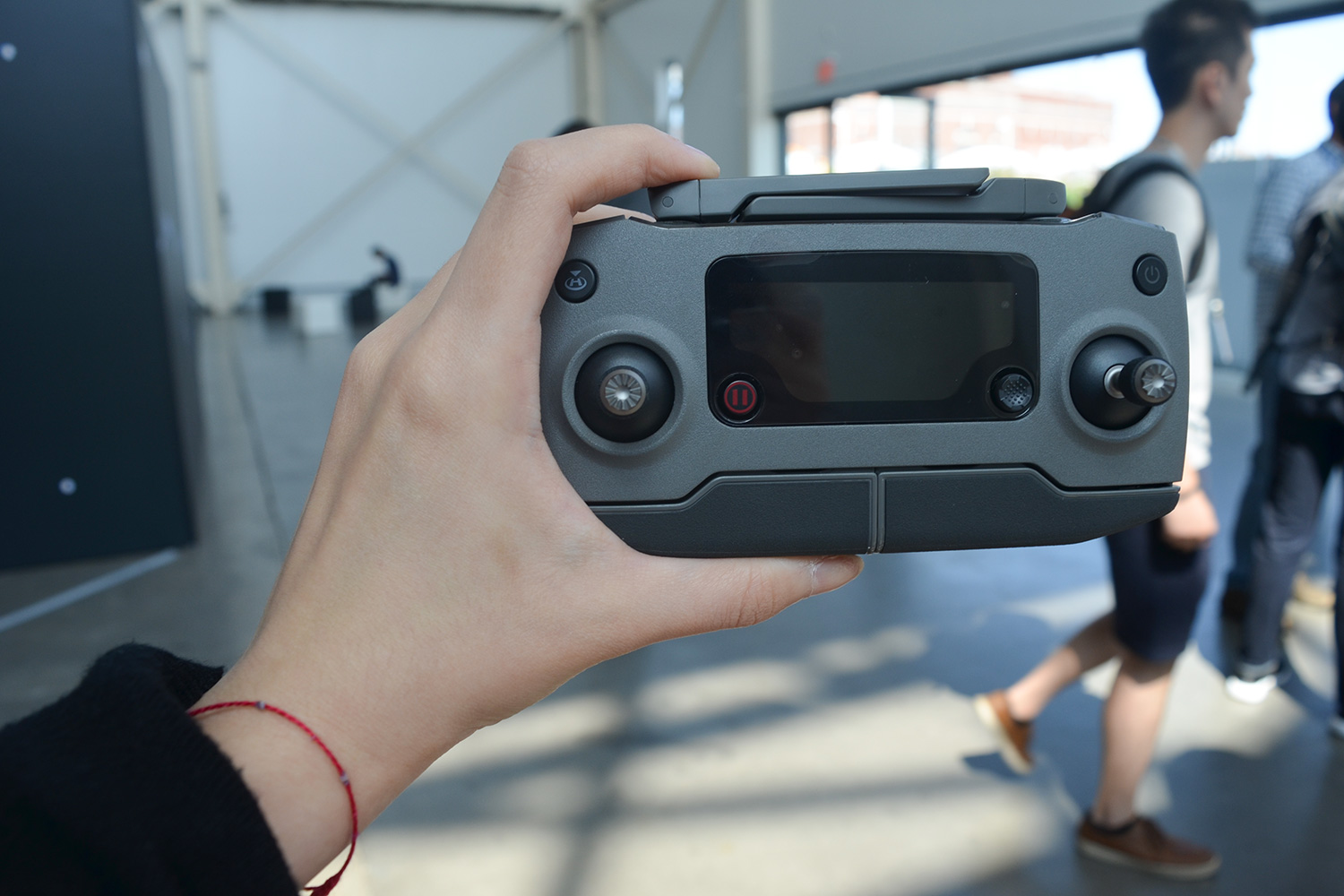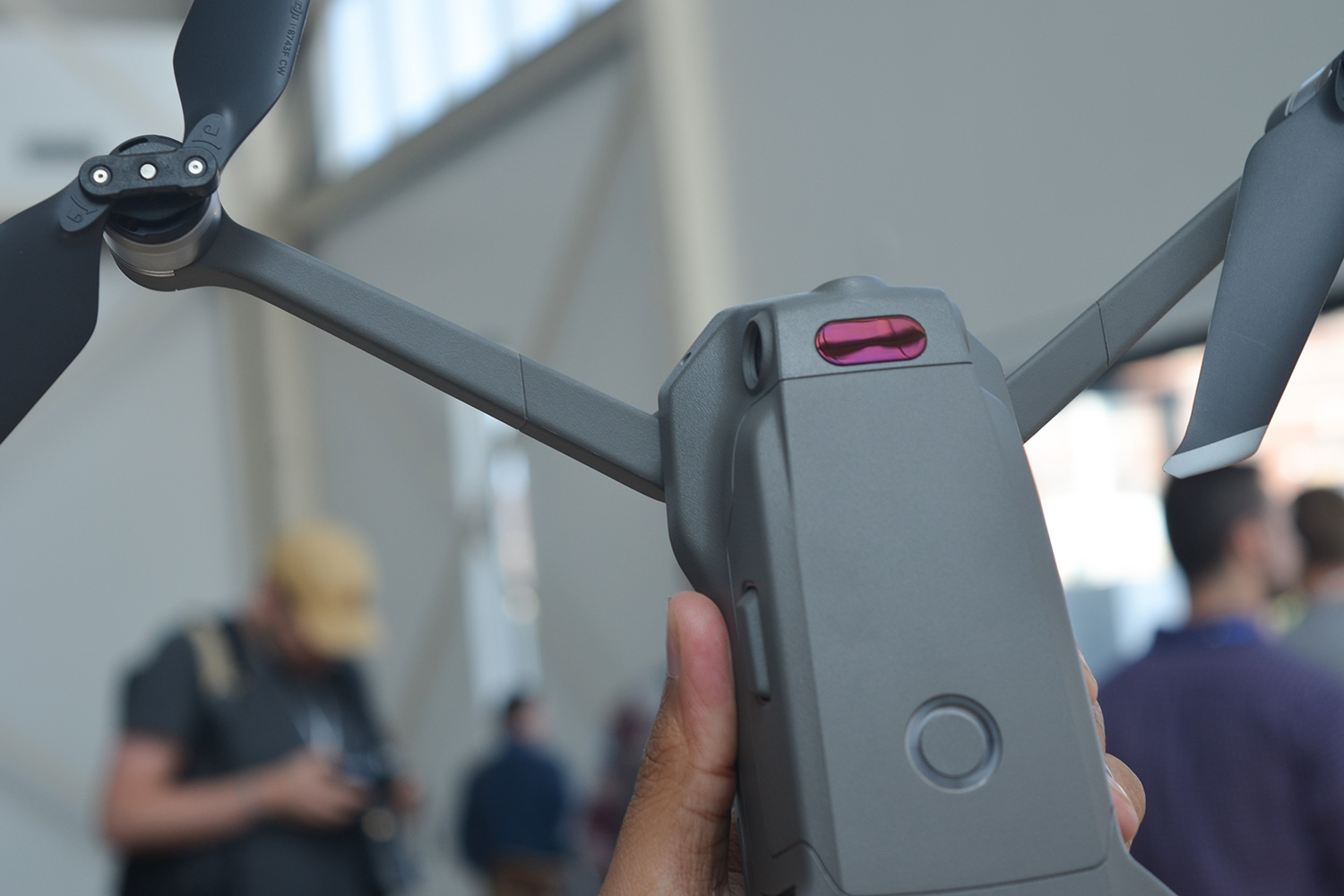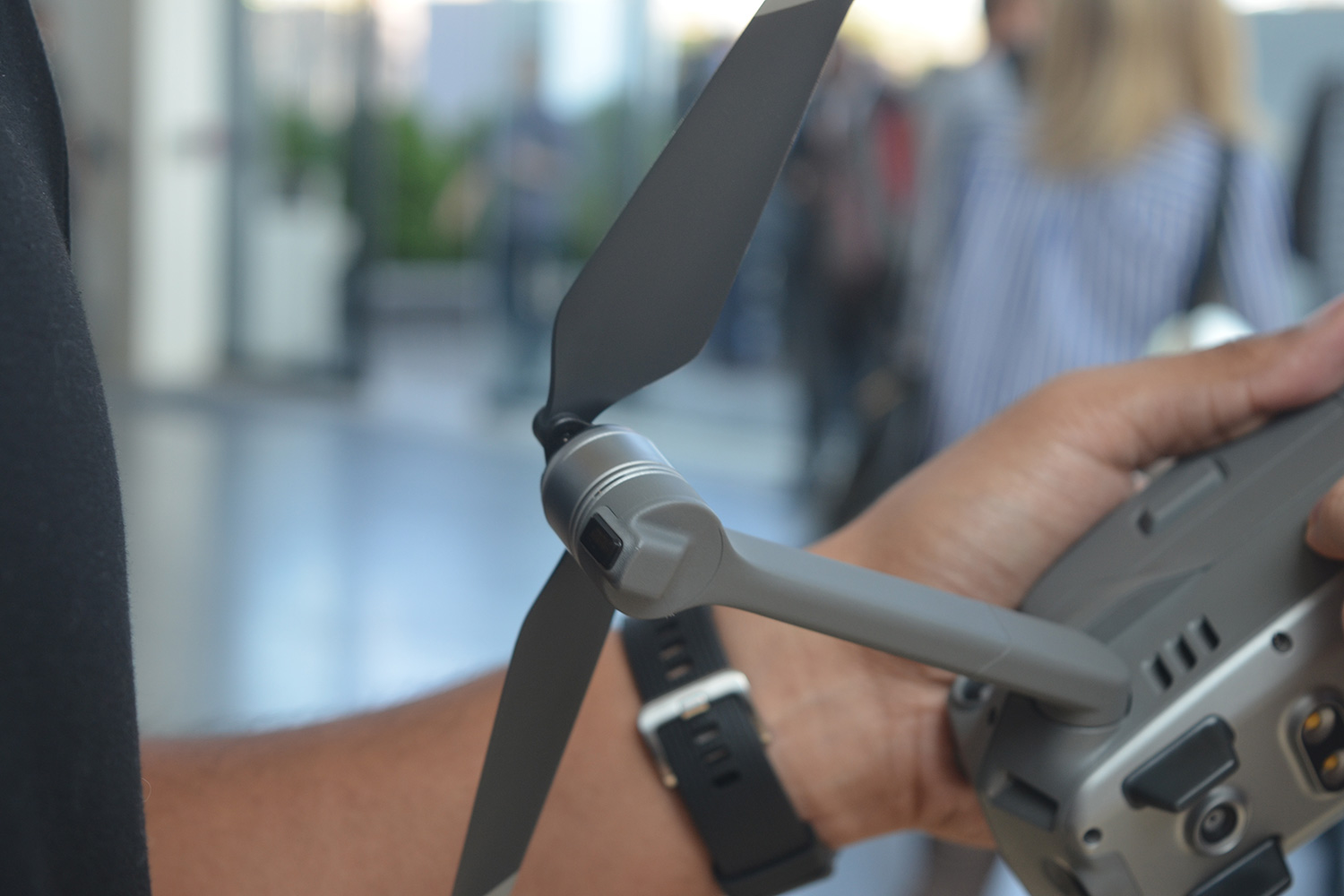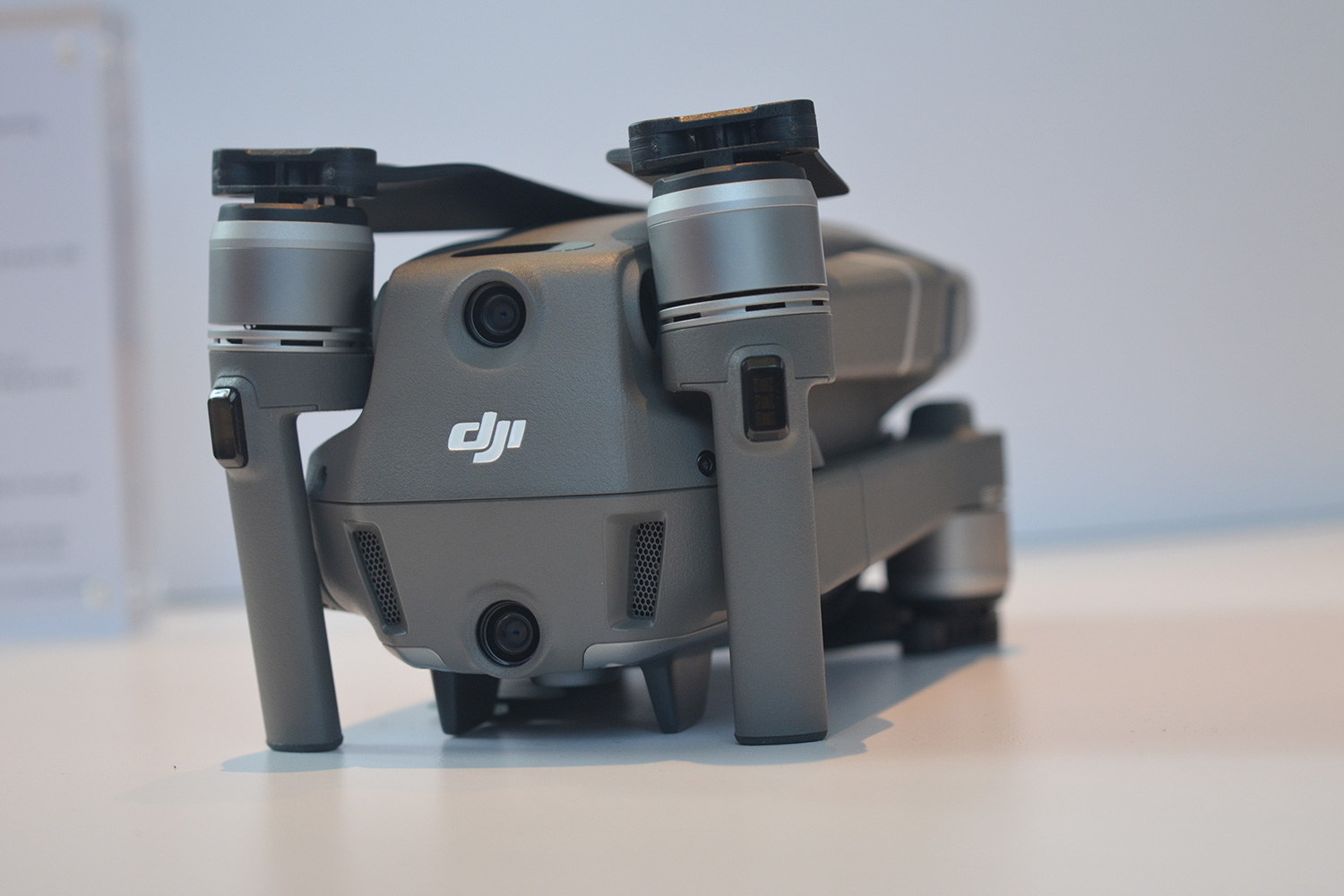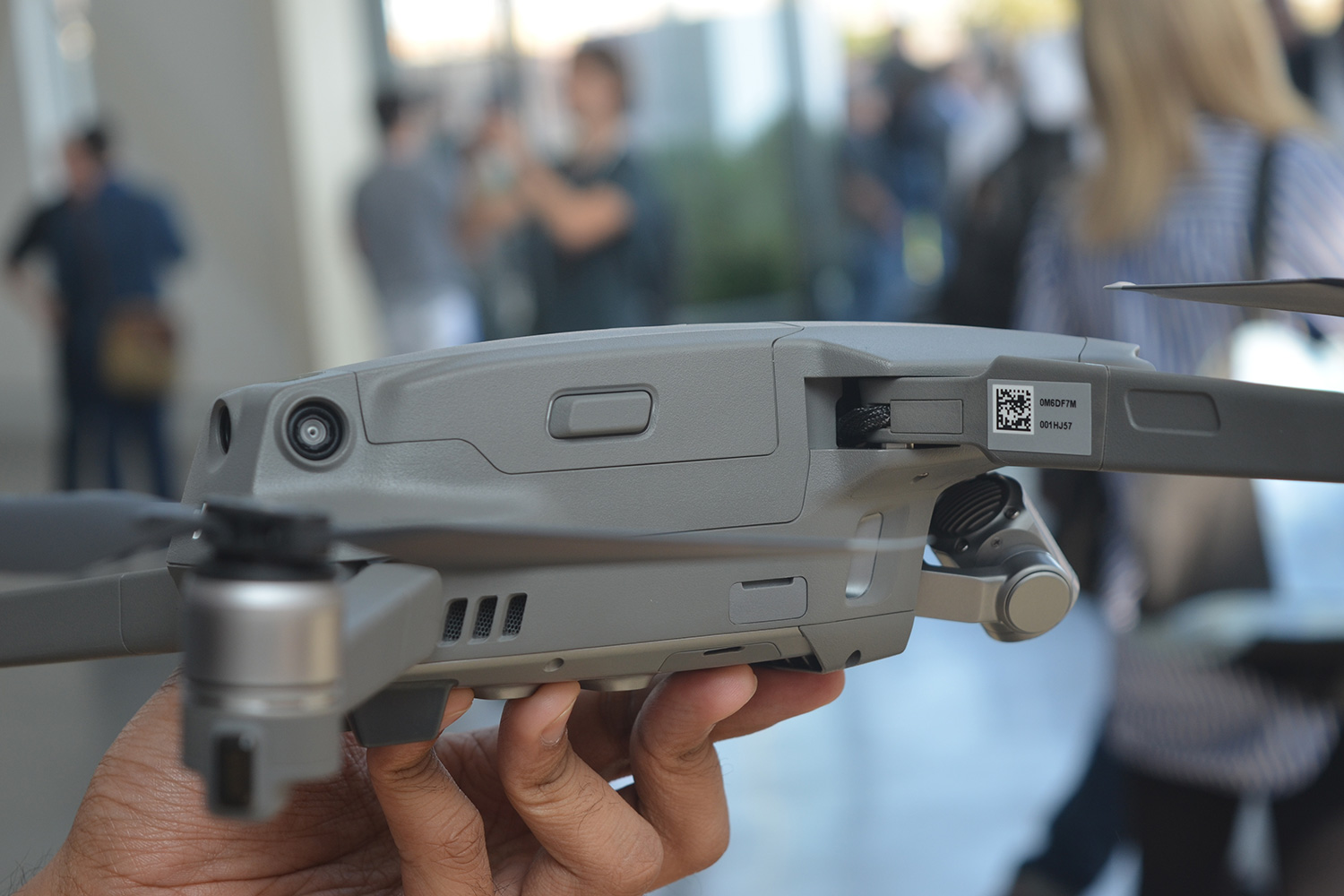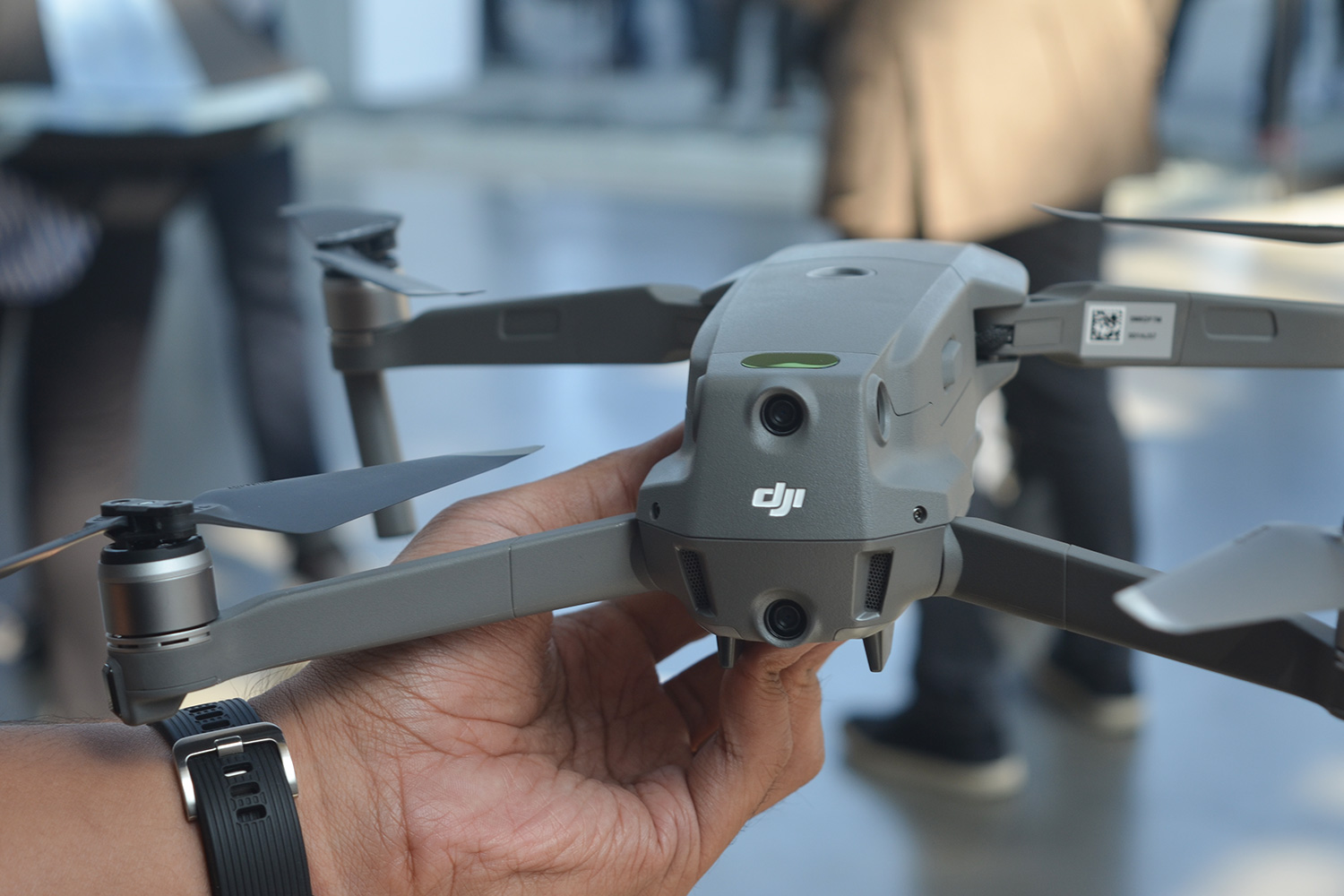Following months of rumors and leaked photos, Chinese drone manufacturer DJI finally pulled the curtain back on its new Mavic 2 series on Thursday, August 23, unveiling two new camera drones: The Mavic 2 Pro and Mavic 2 Zoom.
Billed as “the most advanced DJI camera drone[s] ever built,” the new Mavic 2 quads are an evolution of DJI’s hugely popular Mavic line. As such, both drones are equipped with many of the same bells and whistles as the first generation Mavic, but with a few notable upgrades. Here’s what’s new:
Upgrades Galore
First of all, it’s important to note that aside from the cameras they carry, both Mavic 2 drones are exactly the same in terms of specs. They both boast a 31-minute maximum flight time, 4K video capture abilities, a top speed of 44 mph, and a range of intelligent flight modes. DJI has also equipped them with new-and-improved versions of its core flight software, including:
- ActiveTrack 2.0, which now not only tracks moving subjects automatically but also helps the drone avoid obstacles. Version 2.0 comes with trajectory algorithms that can predict where your subject will be three seconds in the future, and help the drone stay on target even when the subject moves behind an obstacle.
- OcuSync 2.0, which provides a more stable connection between the drone and your controller. In addition to stronger interference resistance, version 2.0 reportedly enables 1080p video transmission feeds at a distance of up to 5 miles (8km), allowing you to “instantly edit and upload Full HD footage directly from the video cache in the DJI app.”
- DJI’s new FlightAutonomy system, which enables more accurate obstacle sensing and safer flight. To make this possible, Both the Mavic 2 Pro and Mavic 2 Zoom are outfitted with 10 sensors that give them full 360-degree environmental awareness.
All things considered, the Mavic 2 line is a significant improvement over the first generation, despite the fact that the new drones don’t look much different from the old ones.
Sharp Shooters
The only real differentiator between the Mavic 2 Pro and the Mavic 2 Zoom is their respective camera setups (and also the shooting modes that are afforded by those setups).
The Mavic 2 Pro is arguably the more powerful of the two, thanks largely to the fact that it’s the first and only drone on the market that carries an integrated Hasselblad camera. “Housing a 1-inch CMOS sensor with a 10-bit Dlog-M color profile, the camera captures four times as many levels of color per channel compared to Mavic Pro to provide maximum flexibility for photo and video editing;” DJI explains in a press release. “The Mavic 2 Pro can capture 20-megapixel aerial shots with utmost color accuracy using Hasselblad’s unique Hasselblad Natural Color Solution (HNCS) technology, while an adjustable aperture from f/2.8-f/11 provides more control across a wide variety of lighting conditions. With 4K 10-bit HDR support, the Mavic 2 Pro can be plugged into a 4K TV with HLG and will play back footage with the right color tones.”
Unfortunately, the Mavic 2 Zoom doesn’t come with a Hasselblad camera — but what it lacks in color accuracy and sensor size, it makes up for with its unique zooming abilities. Much like Parrot’s new Anafi drone, the Mavic Zoom boasts a lossless digital zoom function — a feature that is relatively rare for consumer drones.
“Powered by a 1/2.3-inch CMOS sensor, the Mavic 2 Zoom is DJI’s first foldable consumer drone with zoom, providing a dynamic perspective that ushers in a new era of creative storytelling.” DJI explains. “With the Mavic 2 Zoom, you can get closer to your subject at a moment’s notice by combining two-times optical zoom (24-48mm) with two-times digital zoom to simulate a 96mm telephoto lens that captures lossless video in full HD resolution. Hybrid auto-focus on the Mavic 2 Zoom combines phase and contrast detection for higher focus accuracy with an increased focus speed of up to 40 percent faster than before.”
This new zoom function also enables an awesome shooting trick that, until now, was rather difficult to achieve with a flying camera: The dolly zoom (also known as the vertigo zoom or Hitchcock zoom). You’ve probably seen this before in movies. It’s the shot where the central subject remains the same size while the background zooms in and out, creating a vertigo-inducing visual effect. DJI’s setup automates the process so you can take dolly zoom shots at the press of a button.
Best of all, both Mavic 2 drones are now available for purchase. The Mavic 2 Pro retails for $1,449, whereas the Zoom can be had for $1,249 — a full $200 less. Stay tuned for our full review in the coming weeks!

